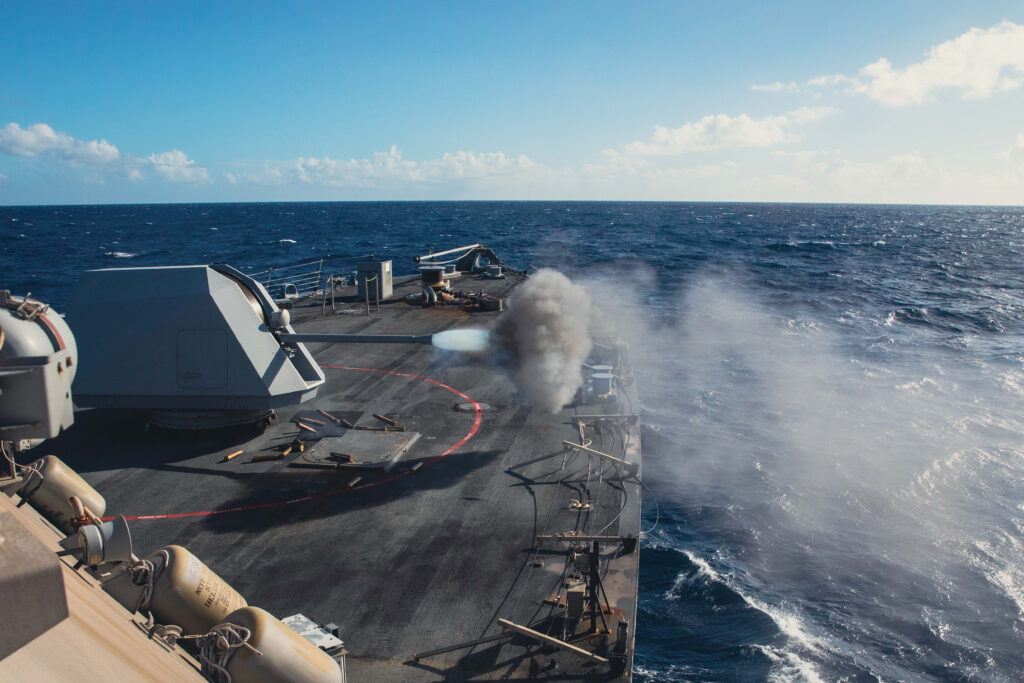
ARLINGTON, Va. — The long-planned forward deployment of littoral combat ships to the Persian Gulf is approaching execution, with the anticipated first deployment of an LCS to the U.S. 5th Fleet, the fleet commander said.
Vice Adm. Brad Cooper, commander, U.S 5th Fleet; commander, Naval Forces U.S. Central Command; and commander, Maritime Forces, speaking in a moderated discussion sponsored by the U.S. Naval Institute and the Center for Strategic and International Studies, a Washington think tank, said the fleet expects to welcome its first LCS in 2022. The ship will be a Freedom-class LCS.
Cooper said planning is underway to receive and support the ship.
“We’re in a much better position today than we were last year” to receive the LCS, he said. “I’m very familiar with all of the nuances from my last job at SurfLant [Naval Surface Force, Atlantic].
The LCS is slated to replace the Cyclone-class coastal patrol ships and Avenger-class mine countermeasures ships in the 5th Fleet.
Cooper said there is “no comparison between a PC and what an LCS will bring,” noting the littoral combat ship’s aviation component with MH-60 helicopters and Fire Scout unmanned helicopters, more kinetic strike capability and greater range and endurance.
“The Navy, over a period of time, has bought the logistics and sustainment component of this that is already prepositioned at Bahrain,” he said.
The LCS would be the latest ship modernization of the U.S. naval forces in the 5th Fleet area of responsibility. The Coast Guard’s Patrol Force Southwest Asia has received two Sentinel-class fast response cutters — with two more en route and two more planned — to replace the six Island-class patrol cutters.
An expeditionary sea base ship — the USS Lewis B. Puller — is serving as a platform for mine countermeasures and naval special warfare forces. Cooper said the ship is operating in the North Arabian Sea in addition to the Persian Gulf.
In addition, the newly organized Task Force 59 is experimenting with unmanned vessels, including persistent surveillance of the Gulf of Aqaba with Saildrone unmanned surface vessels. Cooper said the 23-foot-long Saildrones have been operated in the area for more than 30 days.
Task Force 59 also has integrated and evaluated Mantas T-12 and T-38 unmanned surface vessels in the region.
- Insitu Going Strong at 30, Focusing on Maritime Operations - April 8, 2024
- Navy Awards Boeing Additional Funds for MQ-25 Drones for Testing - April 3, 2024
- Benign 4th Fleet AOR Useful for Unmanned Vehicle Operationalization, Admiral Says - March 27, 2024






